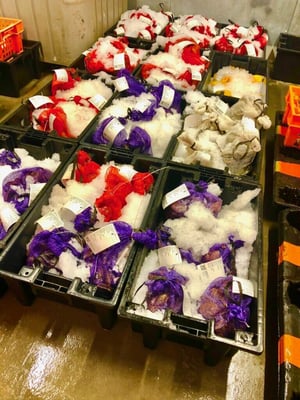Our primary goal at BlueTrace is to streamline operations for our customers and save them valuable time. A significant aspect of achieving this goal is minimizing the time required to create tags and attach them to shellfish containers.
The journey of finding a reliable and durable paper product for our mobile printers has been an ongoing endeavor. However, the main challenge we encountered was the lengthy process of sourcing the perfect paper stock, obtaining samples, and conducting thorough testing.
But here's the exciting part: After collaborating with three vendors and meticulously testing five different paper stocks and perforation patterns, we have finally discovered a thicker paper stock that surpasses expectations in terms of durability and ruggedness for shellfish tags and labels. Now, let me delve into the process we underwent and the ultimate decisions we made...

 Comox, British Columbia. The British Columbia Shellfish
Comox, British Columbia. The British Columbia Shellfish Brad Blymier started as a small pedestrian farmer on t
Brad Blymier started as a small pedestrian farmer on t Almost every farm starts out selling to local restaurants, but as they scale distributors (aka wholesalers) play an increasingly important role. You will make more money per shell at a restaurant, but there is a limit to how much restaurants can buy. If you are producing more than a few local restaurants and some consumers can absorb, you are probably going to need to work with distributors. We've been talking to a lot of distributors lately and here are some of the things farmers should know.
Almost every farm starts out selling to local restaurants, but as they scale distributors (aka wholesalers) play an increasingly important role. You will make more money per shell at a restaurant, but there is a limit to how much restaurants can buy. If you are producing more than a few local restaurants and some consumers can absorb, you are probably going to need to work with distributors. We've been talking to a lot of distributors lately and here are some of the things farmers should know..png?width=2048&name=Image%20from%20iOS%20(25).png)
